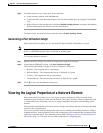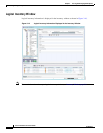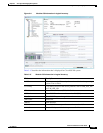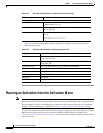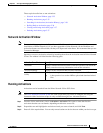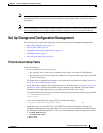
3-35
Cisco Prime Network 4.0 User Guide
OL-29343-01
Chapter 3 Viewing and Managing NE Properties
Running an Activation from the Activation Menu
These topics describe how to run activations:
• Network Activation Window, page 3-35
• Running Activations, page 3-35
• Searching for Activations (Activation History), page 3-36
• Rolling Back an Activation, page 3-36
• Cloning an Existing Activation, page 3-37
• Deleting Activations, page 3-37
Network Activation Window
Note Transaction Manager replaces the Prime Network Workflow and Activation features in all new
installations of Prime Network 4.0. If you have upgraded to Prime Network 4.0, the Workflow and
Activation features are still available, but they will deprecated in the future. We recommend that you use
Transaction Manager.
Operators can access Activation wizards by launching them from the Activation menu in Prime Network
Vision. The window is divided into the following parts.
Running Activations
Activations can be launched from the Prime Network Vision GUI client.
Note The Cisco Developer Network (CDN) has some scripts that you can use as examples for using the
framework. Other activation scripts are only available through Cisco Advanced Services.
Step 1 From the Vision main menu, choose Activation > Activation. This opens a menu that lists the
activations that the user can launch, depending on their user access role.
Step 2 Expand the tree and highlight the activation wizard you want to launch, and click Next.
Step 3 Enter all of the required data. You can only run activations on devices that are within your device scope.
Activation Menu Choices Description
Activation Displays available activation wizards. From here operators can launch the
wizards, enter the necessary information, and run the activation.
Activation History Displays all the activations that have been executed.
Activation Modification
Utility
Used by activation planners to download and upload wizard files.
Tip A best practice is to use the AWB to upload and download wizard
files.



